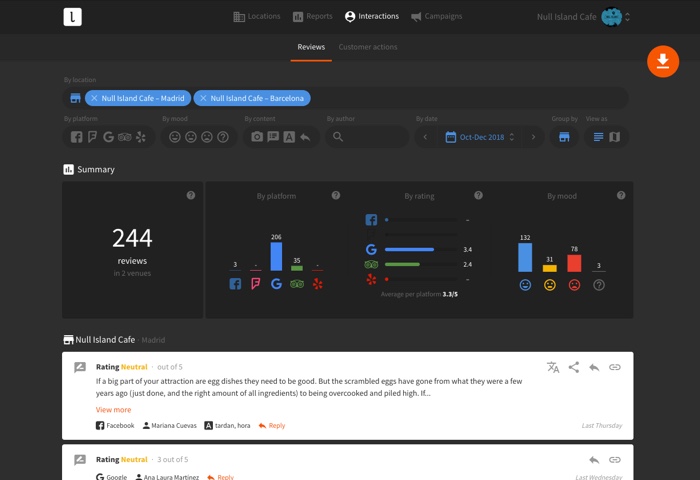Top 5 Online Reputation Management Strategies
These days, it’s rare for a customer to visit a restaurant or local shop without first checking their online reviews. Positive reviews and a strong online presence can help increase your business’s visibility and drive more foot traffic to your location — but negative online content and reviews can just as easily keep potential customers away. In fact, 2017 research from the Spiegel Research Center found that nearly 95 percent of shoppers read online reviews before making a purchase.
And while you can’t control what people who visit your location will ultimately share about their experience with your business online, you can get proactive about how you manage your online reputation. Use these five online reputation management strategies to handle any potentially damaging online messaging about your company and minimise the effects of negative reviews.
1. Track your review sources
Do an experiment: search for your company online and see what types of results come up. Is it largely content you created and own? Or is it social media posts and online review sites where others are controlling the narrative? Ideally, you want the majority of the first page of search results for your company’s name to be owned content. However, since that can be difficult to do — especially if you’re just starting to develop your online reputation — you at least want the first page of results to be from platforms you are watching over. That way, you can track those sources and control how negative reviews are perceived and handled as they come in. Otherwise, you could miss out on valuable business: one study even found that business risk losing up to 22 percent of customers when a negative article is found on the first page of search results.
2. Implement a review acquisition strategy
Having a concrete strategy to encourage local business reviews can help boost your online reputation and encourage more customers to discover your store. Without encouragement, customers are often only motivated to leave a review when their experience is extreme — either extremely good or extremely bad.
That’s why developing a dedicated review acquisition strategy can help capture the everyday customer experience. Keep in mind that you don’t have to be sneaky about it — you can even simply train staff to let customers know how much a review would be appreciated. Next, add in-store signage or messaging to existing printed materials to encourage reviews. If you find that most visitors to your store aren’t aware of how to go about leaving a review or which platforms are popular, you may also consider printing up a short handout with instructions. During check-out, you can also ask customers if they’d like to be added to your email list, then follow-up in a few days and ask them to share their experience. By getting proactive, you can capture the types of reviews that are hugely beneficial to your online reputation, but that customers may not have otherwise felt inspired to leave.
3. Centrally manage online reviews
Unfortunately, with so many different platforms that allow users to review businesses, it can be difficult to keep track of where you stand. By centralising your reviews on one platform, you can better manage and scale your online reputation. Utilising a tool that allows you to review, respond and report on location-specific customer reviews and visual content from one single inbox can make the process of review management not only more feasible but also more effective. This ensures no negative reviews fall through the cracks without your awareness, allowing you to address problems in real time. You won’t have to juggle multiple searches or manage alerts from several different platforms.

4. Don’t bury bad reviews
When a negative review is left on a platform where you control what is published — like your Facebook business page, for example — it can be tempting to make it disappear. However, this just breeds distrust with customers and makes it appear that your company isn’t open to feedback. Unless the reviewer’s content is inappropriate, it’s always best to own your negative reviews. Now, that doesn’t mean you should let them go unanswered.
5. Respond when possible
In fact, a key element of your online reputation management strategies needs to be responding to negative reviews. While it can be tempting to pretend these reviews don’t exist, staying silent often sends the message you don’t care. Many customers who leave negative reviews simply want to know that their grievance was heard and their feedback considered. Avoid getting defensive and instead apologise sincerely for their experience. Be courteous and honest about any misunderstandings that may have occurred. Thank them for taking the time to leave valuable feedback. And responding to reviews isn’t just good for customer service. For instance, did you know that Google indexes reviews and responses? This means review responses can actually be beneficial to your local SEO.
Since many of the customers who walk through your front door will have likely first found your location online, a poor online reputation isn’t a risk you can afford to take. Though managing your online reputation can sometimes seem like an uphill battle, with the right tools, strategies and insight, you can ensure the online face of your business is putting its best foot forward — even before your customer steps foot in your store.